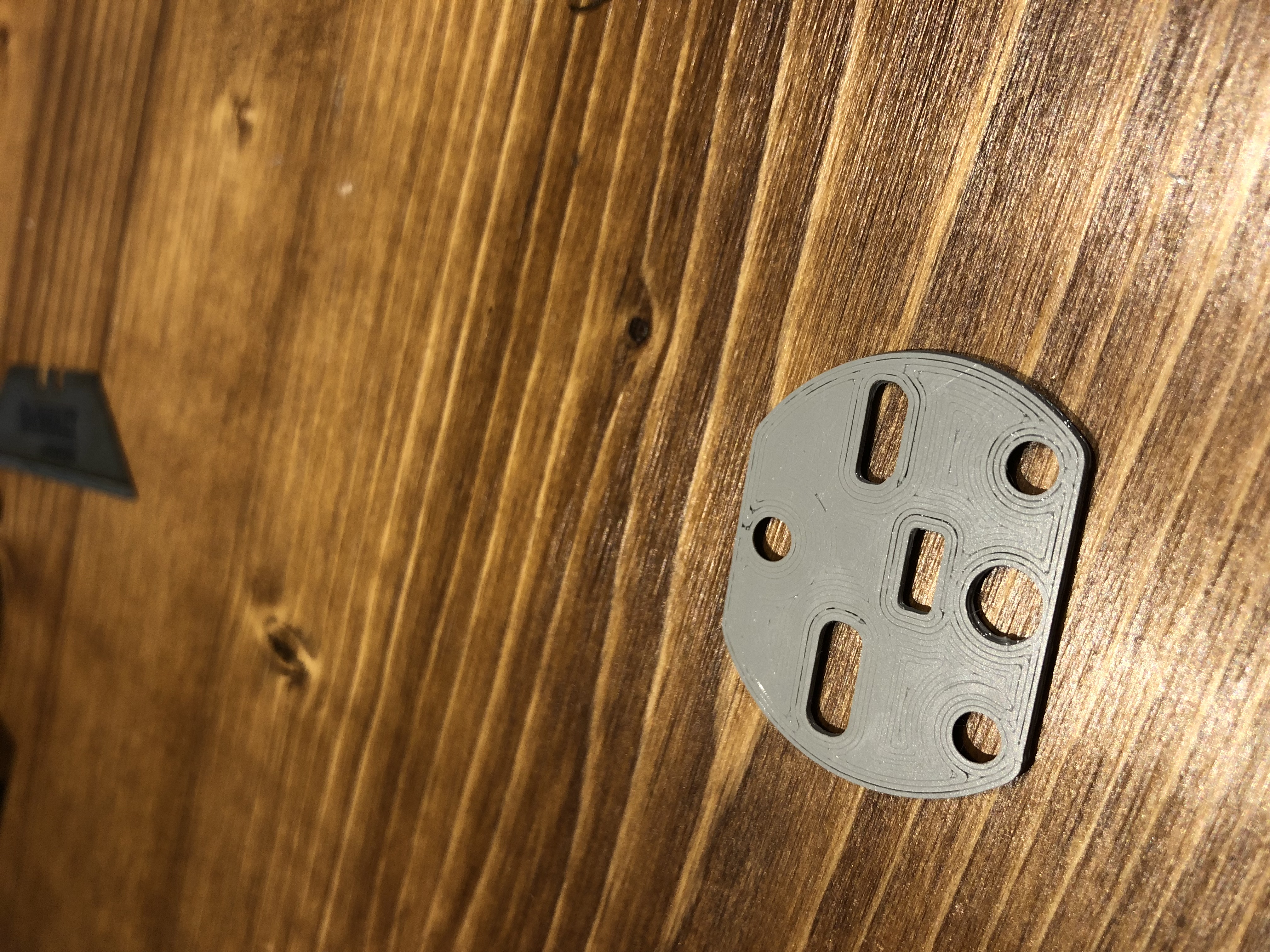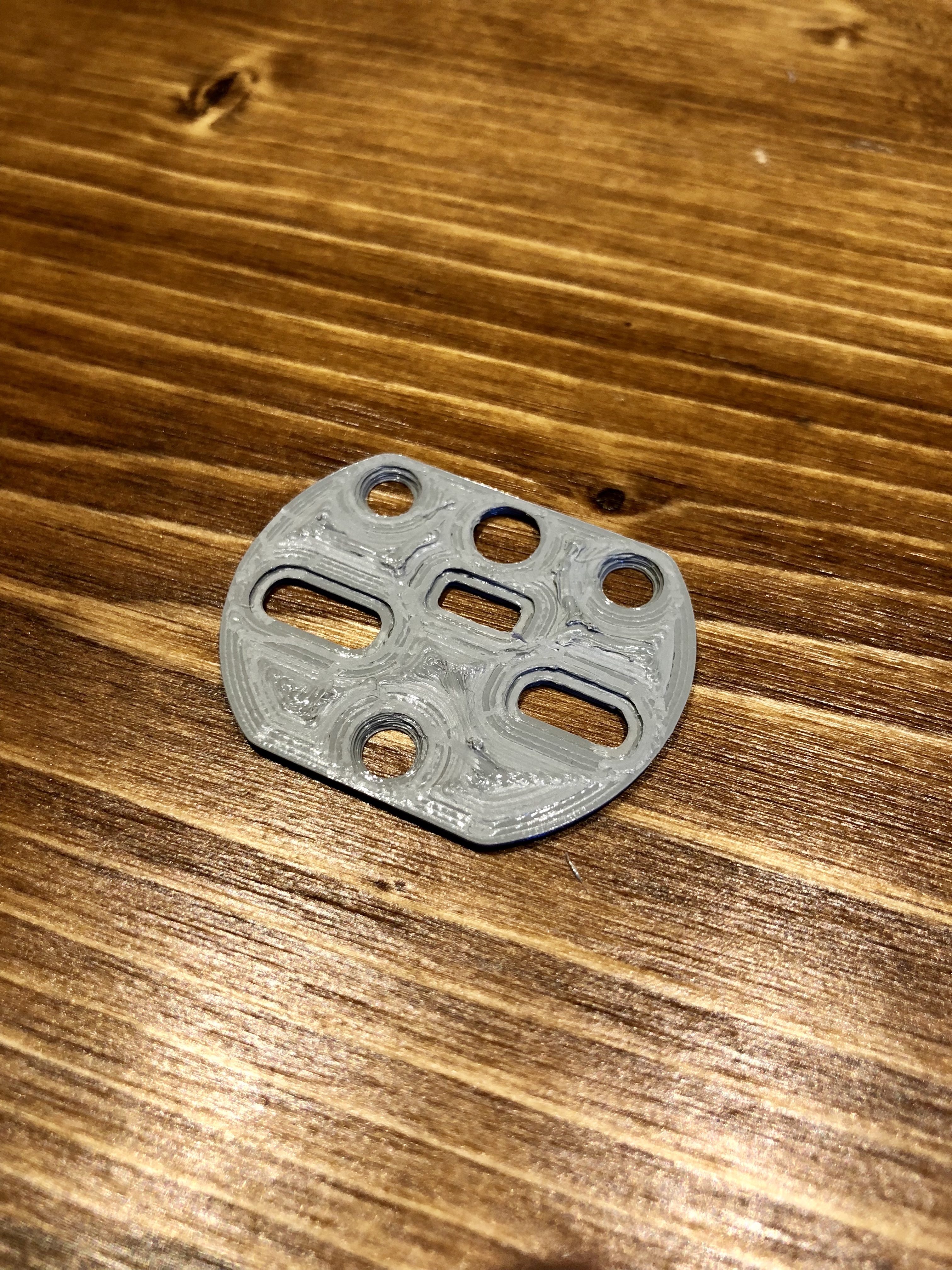Top Layer help
Looking for suggestions on improving (mostly) my top layers. Regardless of material or number of layers, I usually have a very un-even surface or sometimes even a nozzle drag mark.
I've spent so many hours trying to dial in the bottom layer, that I've sort of accepted the that it will never be perfect. I can say that the bottom layer is perfectly smooth on top, though, unlike the final top layer. Here are photos of a recent print I'm trying to improve. Using S3D as my slicer.
Re: Top Layer help
At first glance it looks that nozzle temperature is too high and that you are overextruding. Let's not assume at first that both settings are wrong. First, you need to check specifications for your filament and find what is the minimum extruding temperature.
Start new print with existing settings and when printing starts, from he printer menu choose Tune and set temperature to minimum value. During the print observe the tip of your nozzle. If the nozzle is "dragging" some plastic around the tip, I.e that you overextruding.
If not satisfactory, start new print, adjust temperature and set flow to 90%. probably it is too low, but the idea is to have opposite effect. You will need couple of more iterations to find right value. When you are all set, put these settings in your slicer profile.
I would say that 98% flow value is ok, 95% is acceptable but if you need lower values, problem is somewhere else.
Re: Top Layer help
At first glance it looks that nozzle temperature is too high and that you are overextruding. Let's not assume at first that both settings are wrong. First, you need to check specifications for your filament and find what is the minimum extruding temperature.
Start new print with existing settings and when printing starts, from he printer menu choose Tune and set temperature to minimum value. During the print observe the tip of your nozzle. If the nozzle is "dragging" some plastic around the tip, I.e that you overextruding.
If not satisfactory, start new print, adjust temperature and set flow to 90%. probably it is too low, but the idea is to have opposite effect. You will need couple of more iterations to find right value. When you are all set, put these settings in your slicer profile.
I would say that 98% flow value is ok, 95% is acceptable but if you need lower values, problem is somewhere else.
Thanks so much for a starting point. I did exactly as you suggested and have slowly tweaked these settings for 10 of these prints (only about 6 minutes each) and I'm at a point where I'm scratching my head. The temperature was only 5 degrees above recommended for this PETG filament, but now it is 5 degrees below recommendation, at 225. My extrusion multiplier is now at .96.
I am now seeing a marginally better top layer, but with some small gaps, which would imply under-extrusion and still little blobs as above (maybe 5% better), which seems like would imply over-extrusion. Where should I go from here? I do have a silicon sock on - would you think I could lower the temp another 5 degrees (a full 10 degrees under the lower limit recommendation for this filament). I don't really want to lower my extrusion multiplier, because i'm seeing far more little gaps in the first layer and it seems layer bonding could potentially be an issue.
Re: Top Layer help
OK, finally starting to see some larger improvement by increasing the Z-vertical lift during retraction and also changing the external fill from concentric to rectilinear.
Re: Top Layer help
Several things that can affect the temperature difference the is ideal for you and that posted by the manufacturer:-
All these and more will give you a different ideal print temperature to the manufactures settings.
As an example for my preferred brand of PLA+ the manufacturer list a print temperature range of 205-230°C. My actual print settings are 205°C first layer 195°C the rest. Basically 10°C below the manufactures stated values. On the other hand the PETG I prefer the manufacturer (different one from the PLA+) states for 1.75mm filament start at 220°C and work up in 5°C increments possibly going up to 245°C for fast moves. This I print at 240°C first layer and 245°C the rest.
Regards,
Martin
Martin Wolfe
Re: Top Layer help
Hi Richrock,
have you completed a PID Calibration, since you installed the extruder sock?
the PID settings control the power input to the extruder with an intent to achieve a stable resultant temperature, as supplied, or after firmware upgrade, these are set to a workable set of parameters,
if you change the dynamics of the extruder by changing print temperature, adding a sock, or changing heat block material for instance, then you need to re run the PID configuration at the temperature you normally print.
the printer will then update the settings internally.
regards Joan
I try to make safe suggestions,You should understand the context and ensure you are happy that they are safe before attempting to apply my suggestions, what you do, is YOUR responsibility.Location Halifax UK
Re: Top Layer help
Hi,
Glad to hear that you are making progress. Keep in mind that your object is small and that layer is finished quickly. If the layer bellow is not cooled enough and you lay the new one, you will finish with a mess.
There are couple of ways to avoid this situation . Most simple, reduce your speed. Start your print and after first layer dial (from printer menu) the speed to cca 30% of original value. For orientation, you should print about the same speed as your first layer.
The other solution is to print more objects in the same time. This way the layers will have time to cool.
Re: Top Layer help
Thanks you all for the great advice and tips! I'll definitely be coming back to this thread and working on improving my setup.
Yes, I ran calibration after putting the sock on - just the internal PID calibration routine. I'll continue to fine tune the settings, but I realize this is a small part and to fill in some of the details, a smaller nozzle might be the next step. I'm pretty happy with the way it looks now!

